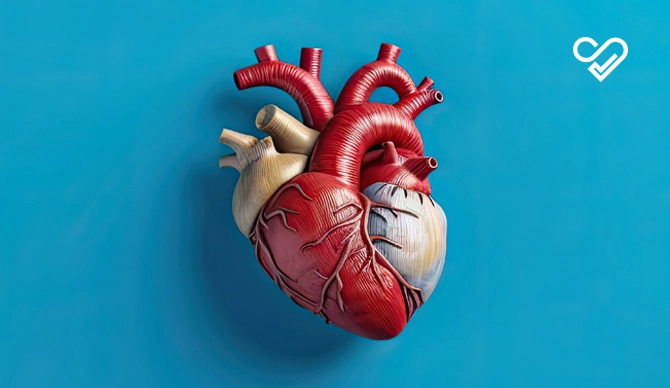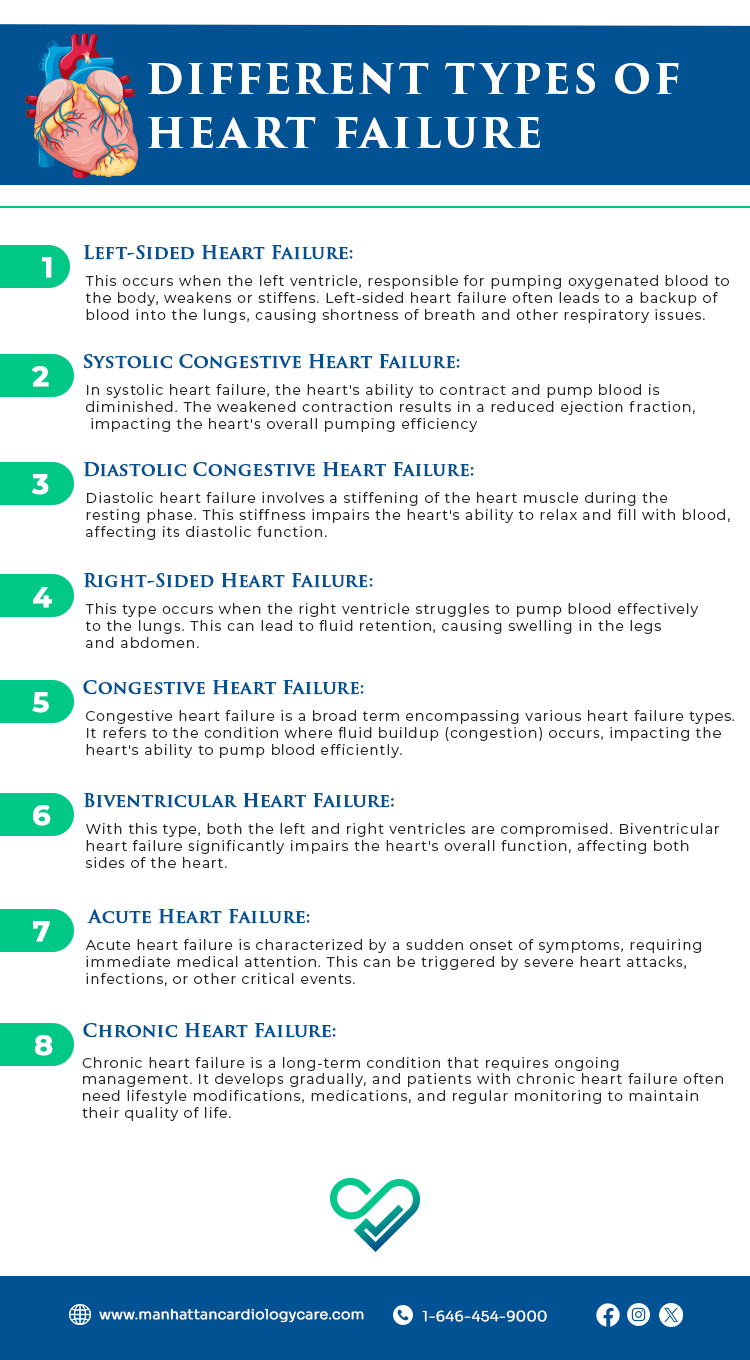Ever thought how your heart tirelessly pumps blood throughout your body, making sure that every organ gets the oxygen it needs?
And what happens when your heart begins to falter, leading to a condition known as heart failure?
In today’s blog, we will explore what a heart failure is and the various types of heart failure. Having an in-depth understanding of our heart and the types of heart failure that can effect it, is not just about knowledge; it’s about empowering yourself to prioritize your heart’s health.
Table of contents
What is Heart Failure?
Heart failure is not a sudden stop but rather a gradual decline in the heart’s ability to pump blood effectively. This complex mechanism can be disrupted by various factors, ultimately leading to compromised heart function.
In essence, heart failure is a condition where the heart cannot meet the body’s demand for pumping blood and oxygen. It’s a chronic condition that requires careful management and understanding.
Symptoms of Heart Failure
If we can recognize the warning signs of a heart failure, it helps immensely with timely intervention and effective management.
Here’s a list of the symptoms of heart failure:
- Fatigue: As the heart’s ability to pump blood diminishes, your body receives less oxygen, leading to feelings of exhaustion even with minimal exertion.
- Shortness of Breath: Difficulty breathing or shortness of breath occurs due to fluid buildup in the lungs, making breathing more challenging.
- Persistent Coughing: A chronic cough that produces white or pink blood-tinged phlegm can be indicative of heart failure. This happens when fluid backs up into the lungs, causing irritation and triggering coughing spells.
- Fluid Retention: Swelling in the legs, abdomen, or other parts of the body is a common sign of fluid retention. The kidneys, responding to the heart’s decreased pumping capacity, retain sodium and water, leading to edema.
- Irregular Heartbeat: Heart palpitations or irregular heartbeats can signal an underlying issue. As the heart weakens, it may struggle to maintain a regular rhythm, causing palpitations or a sensation of fluttering in the chest.
- Reduced Exercise Tolerance: Individuals with heart failure often find it challenging to engage in physical activities they could previously tolerate. The decreased cardiac output limits the body’s ability to meet the increased demand for oxygen during exercise.
- Weight Gain: Unexplained weight gain, often accompanied by swelling, is a common symptom, caused by fluid retention.
- Loss of Appetite: Heart failure can impact the digestive system as well, leading to a loss of appetite; leading to weight loss over time.
- Difficulty Concentrating: Insufficient blood flow to the brain can result in difficulty concentrating and impaired cognitive function – accompanied by memory lapses and a general sense of mental fog.
- Dizziness or Fainting: Reduced blood flow to the brain can cause dizziness or fainting spells.
Different Types of Heart Failure
Heart failure is a multifaceted condition with various types, each presenting distinct challenges. Understanding each type is important to tailor an effective treatment plan.
Here are all the different types of heart failure:
1) Left-Sided Heart Failure:
This occurs when the left ventricle, responsible for pumping oxygenated blood to the body, weakens or stiffens. Left-sided heart failure often leads to a backup of blood into the lungs, causing shortness of breath and other respiratory issues.
2) Systolic Congestive Heart Failure:
In systolic heart failure, the heart’s ability to contract and pump blood is diminished. The weakened contraction results in a reduced ejection fraction, impacting the heart’s overall pumping efficiency.
3) Diastolic Congestive Heart Failure:
Diastolic heart failure involves a stiffening of the heart muscle during the resting phase. This stiffness impairs the heart’s ability to relax and fill with blood, affecting its diastolic function.
4) Right-Sided Heart Failure:
This type occurs when the right ventricle struggles to pump blood effectively to the lungs. This can lead to fluid retention, causing swelling in the legs and abdomen.
5) Congestive Heart Failure:
Congestive heart failure is a broad term encompassing various heart failure types. It refers to the condition where fluid buildup (congestion) occurs, impacting the heart’s ability to pump blood efficiently.
6) Biventricular Heart Failure:
With this type, both the left and right ventricles are compromised. Biventricular heart failure significantly impairs the heart’s overall function, affecting both sides of the heart.
7) Acute Heart Failure:
Acute heart failure is characterized by a sudden onset of symptoms, requiring immediate medical attention. This can be triggered by severe heart attacks, infections, or other critical events.
8) Chronic Heart Failure:
Chronic heart failure is a long-term condition that requires ongoing management. It develops gradually, and patients with chronic heart failure often need lifestyle modifications, medications, and regular monitoring to maintain their quality of life.
When to See a Doctor?
Early detection is key. If you experience persistent symptoms such as shortness of breath, fatigue, or swelling, it’s imperative to consult a healthcare professional promptly. Timely intervention can significantly improve outcomes and enhance your quality of life.
Frequently Asked Questions
What are the 4 types of heart failure?
The four types of heart failure are systolic heart failure, diastolic heart failure, left-sided heart failure, and right-sided heart failure.
What are the three classifications of heart failure?
The three classifications of heart failure are Stage A, Stage B, and Stage C/D, based on the American College of Cardiology (ACC) and American Heart Association (AHA) guidelines.
What is type 2 heart failure?
Type 2 heart failure, also known as heart failure with preserved ejection fraction (HFpEF), is characterized by the heart’s inability to relax properly during the resting phase, leading to impaired filling of the ventricles.
What is Grade 4 heart failure?
Grade 4 heart failure is a classification indicating severe symptoms and limitations. It often involves symptoms at rest despite minimal physical activity.
What is Stage B heart failure?
Stage B heart failure refers to a pre-symptomatic phase where structural heart abnormalities are present, but there are no signs or symptoms of heart failure. It is a critical stage for preventive measures.
How to diagnose heart failure?
Heart failure is diagnosed through a combination of medical history, physical examination, imaging tests (such as echocardiogram), blood tests (BNP or NT-pro BNP), and sometimes additional diagnostic procedures like a cardiac catheterization or stress test. Early diagnosis is key to effective management.
– Disclaimer –
This blog is for informational & educational purposes only, and does not intend to substitute any professional medical advice or consultation. For any health related concerns, please consult with your physician, or call 911.


